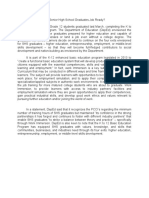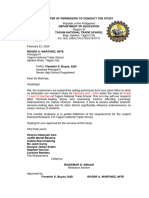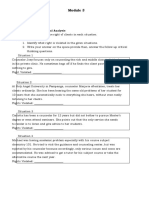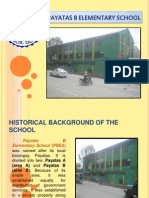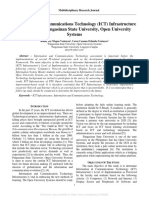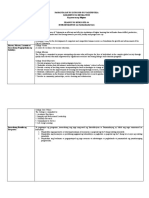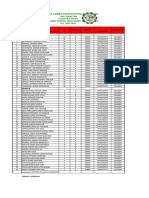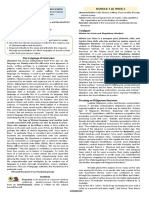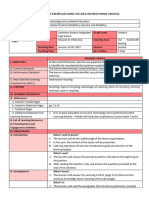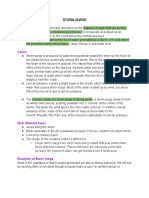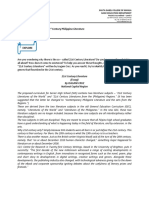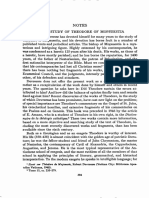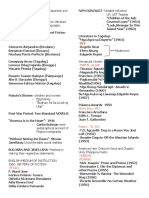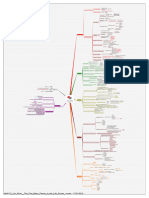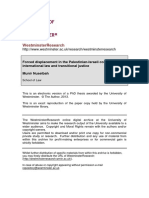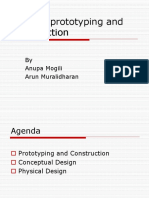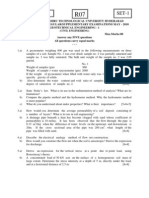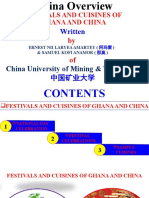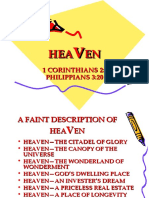Barte, Charmane M.
II- EN4 Progress Report The purpose of these reports is to inform the Corporation of: progress against agreed milestones and the significance and implications of the research to date problems that could influence the conduct and outcomes of the project and that may require mutually agreed modification of the workplan and budget and opportunities for new projects, workshops, media releases, the protection of intellectual property, commercialisation etc. The information provided allows the Corporation to consider both opportunities and problems arising from the research project and will be the primary benchmark used by research managers to check that the project is on track. Scheduled payments each year are dependent on the annual progress report being assessed as satisfactory by the research manager. Timing Reporting dates are as specified in Schedule 6 of the Research Agreement. Reports must reach the Corporation by the agreed reporting date and should be completed inClarit y whether the milestones have been achieved or not. The Corporation may withhold funding for a given project: when a report is not received by the due date when satisfactory progress does not appear to have been made when significant changes to the workplan and budget need to be agreed. To avoid delays in payment, early warning should be given when it appears likely that an agreed milestone cannot be achieved on time. Format The report should be entered in the online database management system Clarity. The structure below shows the headings in Clarity you will be asked to address.
�Project objectives Agreed objectives as stated in the Research Agreement Progress against agreed milestones Use the agreed performance indicators to indicate whether the milestone(s) have been achieved or not and, where appropriate, provide copies of material generated by the project. Comment on the significance or implications of the milestone(s) achieved to the targeted rural industry or community sector. Where the agreed milestones have not been achieved, provide reasons for this and propose a revised reporting date. Outcomes, issues and recommendations Outline any outcomes, issues and recommendations, also include a proposed management strategy for any issues. Demonstration/promotion/extension activities/research reporting Researchers should identify issues such as commercialisation, advertising, communication/extension and opportunities for new projects, workshops etc arising from the research. Confirmation of industry funding, if not already notified Where the project budget shows a contribution from industry, the Corporation requires confirmation that the research organisation has received that contribution for the relevant financial year. To release research funds it is essential to complete this section in Clarity if your project budget has an amount in the "industry contribution" column. Variation requests not already identified to RIRDC Variations to the project, including timing, staffing and budgets, will need to be approved by the Corporation. A justification for the changes sought must be provided. Other comments Space for any other comments Length and content As annual progress payments are made following approval of progress reports, sufficient information should be provided to allow research managers to fairly assess
�progress against the agreed tasks. Reports should enable the Corporation to: determine if milestones have been achieved respond to any problems that have arisen consider variations that are proposed develop ideas and opportunities arising from the project As indicated above, they should address the significance and implications of the outcomesreported as well as providing information on the work completed.Clarity will restrict thecontent to 250 words per heading. Reports should be written in a user friendly manner with minimum use of scientific jargon and acronyms. New technical terms should be explained where necessary. Do not repeat information included in previous reports.
PROGRESS REPORT Stratigraphic Architecture of Deep-Ramp Carbonates: Implications for Deposition of Volcanic Ashes, Salona and Coburn Formations, Central Pennsylvania by John Lerner SCOPE AND PURPOSE The Late Middle Ordovician-age Salona and Coburn formations of central Pennsylvania show cyclic patterns on a scale of tens of meters. Little research has been done on sequence stratigraphy of deep-water mixed carbonate/siliciclastic systems, and a depositional model for this environment is necessary to understand the timing and processes of deposition. The stratigraphic position of the bentonites at the base of the larger cycles is significant because it indicates that they accumulated during a time of nondeposition in a deep water environment. PROGRESS To date, I have described five lithofacies present in the Salona and Coburn formations. Two lithofacies are interpreted as storm deposits and make up the limestone component of the thinly-bedded couplets. Some trends were observed in the raw data; however, because of the noisy nature of the data,
�a plot of the five-point moving average of bed thickness was created to define the cycles better. ADDITIONAL WORK Two key tasks are to be completed in the coming weeks. With the results of these tests and the field observations, I will create a model for deposition of a deep-ramp mixed carbonate/siliciclastic system in a foreland basin environment. The model will include depositional processes, stratigraphic architecture, and tectonic setting. REMAINING QUESTIONS Questions remain regarding the depositional processes responsible for the featureless micrite at the base of the Salona Formation. How rapid was the transition? What record (if any?) remains of the transition? Were bentonites not deposited, or were they selectively removed at certain locations by erosive storm processes? EXPECTED RESULTS I expect to find that the large-scale cycles represent parasequences. Flooding surfaces are marked by bentonites and shales, with bentonites removed in some locations. If the cycles are true parasequences, the implication is that eustatic sea level changes and not tectonic influences controlled the depositional changes over the interval.
This page was downloaded from Style for Students Online, available at https://www.e education.psu.edu/styleforstudents/

